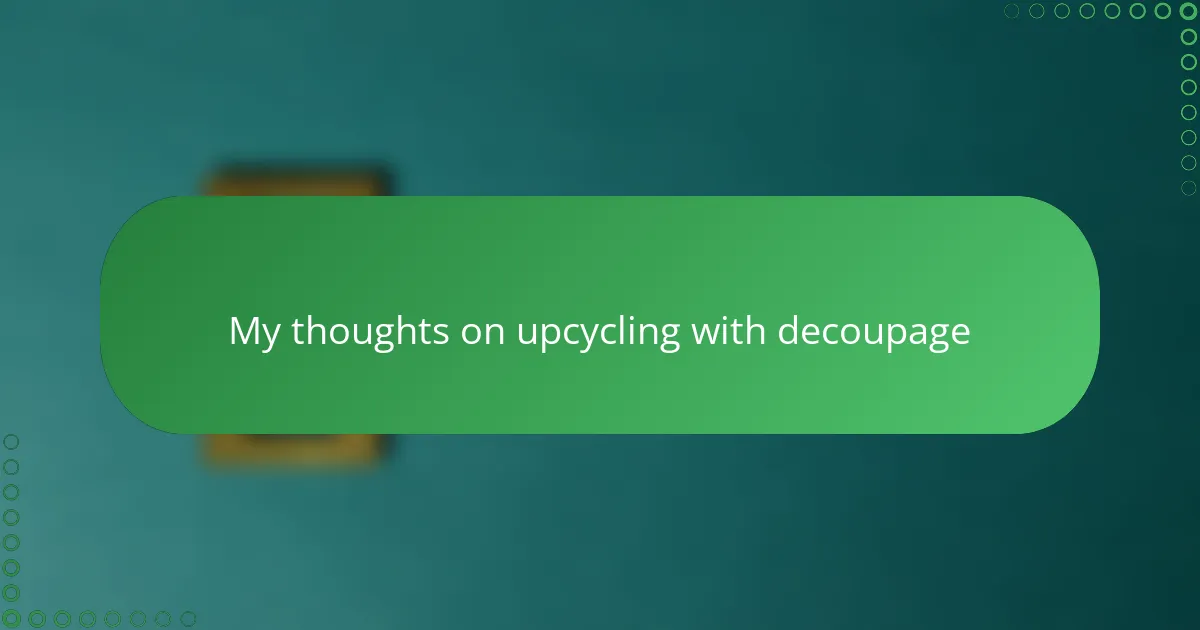Key takeaways
- Handmade paper crafts encourage personal creativity and yield unique, one-of-a-kind projects that celebrate imperfections.
- Decoupage is an engaging technique for transforming ordinary objects through layering papers, fostering both creativity and sustainability.
- Upcycling reduces waste and allows crafters to create functional art while enjoying the unpredictability of working with found materials.
- Essential tools and careful preparation significantly enhance the quality and outcome of decoupage projects, emphasizing the importance of patience and planning.
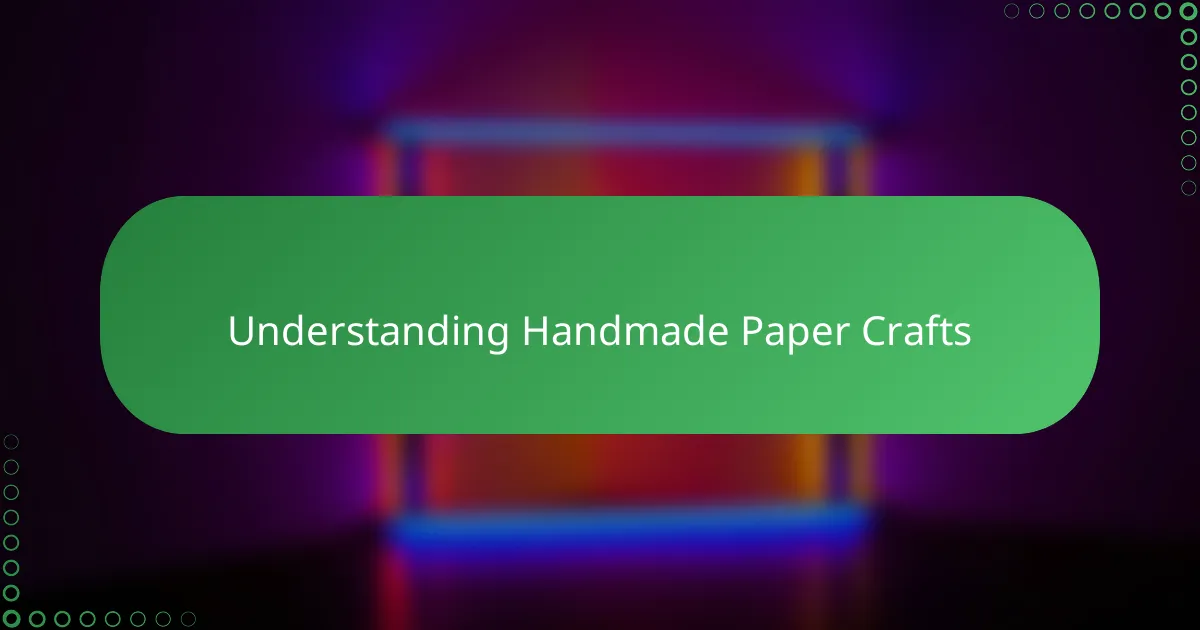
Understanding Handmade Paper Crafts
Handmade paper crafts have a certain charm that machine-made products just can’t match. When I first tried creating paper by hand, I was struck by how tactile and meditative the process felt—it truly connects you to the material in a way that feels personal and rewarding. Have you ever noticed how the slight imperfections in handmade paper add character and tell a story all their own?
Working with handmade paper is about embracing creativity and patience. Each sheet carries its unique texture and weight, making every craft project one-of-a-kind. To me, that unpredictability is where the magic happens; it invites you to experiment and find joy in the unexpected.
What makes handmade paper crafts so captivating is their blend of tradition and personal expression. I often find myself reflecting on the history behind the techniques while adding my own twist, which creates a meaningful dialogue between past and present. Isn’t it fascinating how something as simple as paper can hold so much potential?
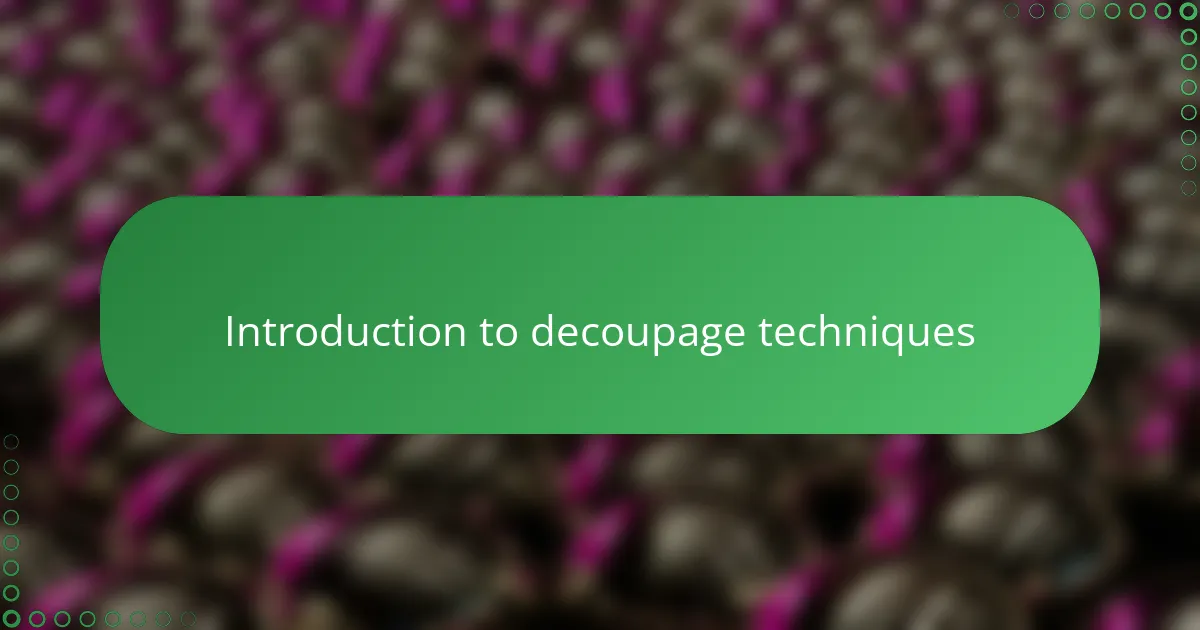
Introduction to Decoupage Techniques
Decoupage, at its core, is a delightful technique that transforms ordinary objects into pieces of art by layering paper cutouts and sealing them with varnish or glue. When I first tried decoupage, I was amazed at how simple materials like handmade paper could breathe new life into something old or plain. Have you ever felt that thrill when a flat image suddenly becomes part of a textured, tactile surface?
The beauty of decoupage lies not just in the final look but in the process itself. Carefully selecting images, arranging them thoughtfully, and smoothing each layer felt almost like a form of meditation for me. It’s a gentle craft that encourages patience and precision but also welcomes a bit of whimsy and improvisation.
What I find truly inspiring is how decoupage bridges creativity with sustainability. Have you ever considered how upcycling with decoupage can turn forgotten items into treasured keepsakes? It’s a wonderful way to give objects a second chance, and every project carries a story that’s uniquely yours.
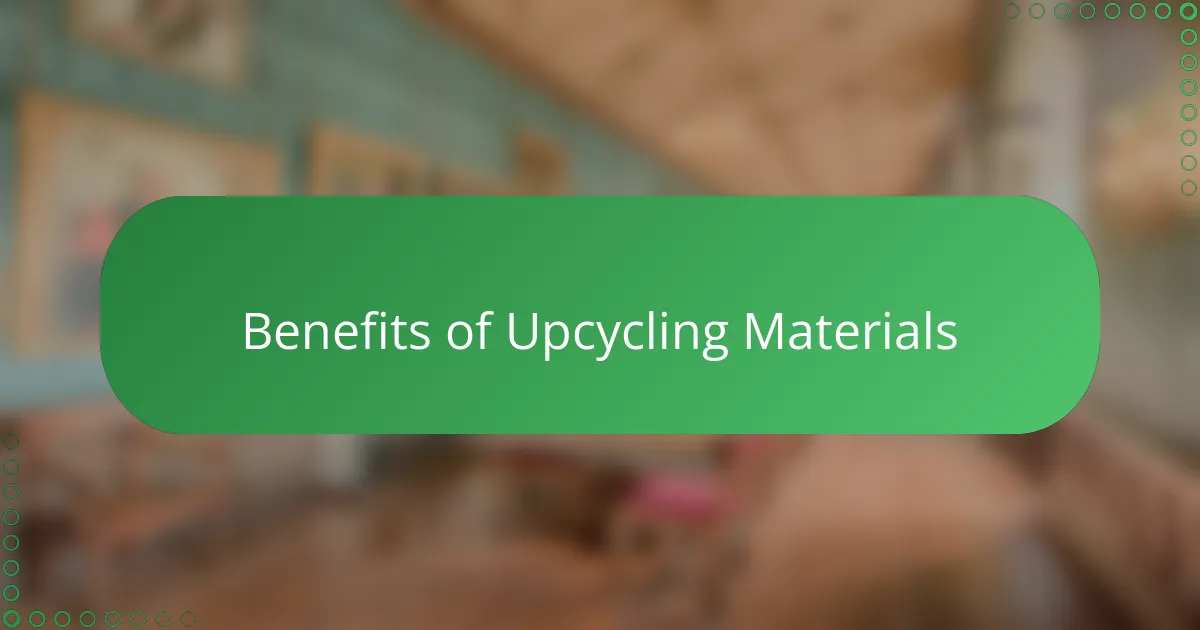
Benefits of Upcycling Materials
One of the biggest benefits I’ve discovered with upcycling materials is the incredible sense of satisfaction it brings. Knowing that something destined for the trash can be transformed into a beautiful, functional piece through decoupage makes the creative process feel deeply meaningful. Have you ever felt that surge of pride when you realize you’ve given new life to something old?
Upcycling also feels like a personal contribution to reducing waste, which matters to me more with each project. It’s a small but tangible way to practice sustainability, turning what could be discarded into something useful and lovely. This makes crafting more than just a hobby—it becomes a way to care for the environment while expressing creativity.
There’s also this wonderful unpredictability that comes with using found or leftover materials. I never quite know how the colors and textures will interact until I start layering with glue and varnish. It keeps the process exciting and fresh, reminding me that creativity thrives when we work with what we have, not just what’s perfect or brand new.
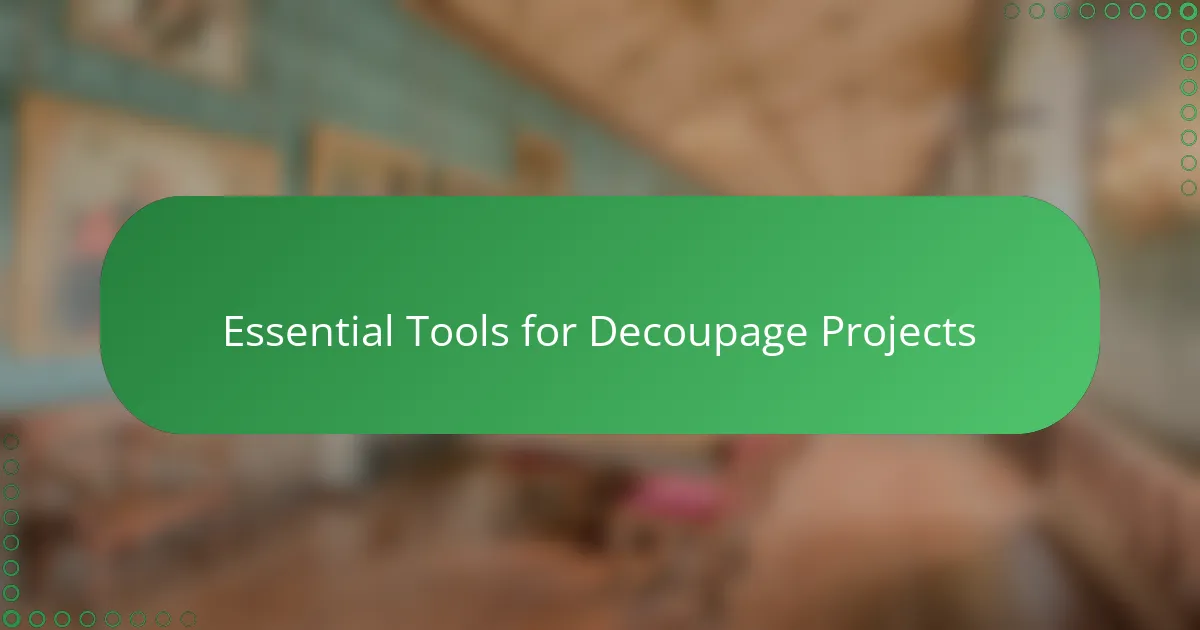
Essential Tools for Decoupage Projects
Every decoupage project starts with the right tools, and honestly, having these essentials has made all the difference in my experience. A smooth, wide brush helps spread glue evenly without tearing the delicate handmade paper, while a sharp pair of scissors lets you cut intricate shapes precisely, which I find really satisfying.
I’ve also come to rely heavily on a good-quality decoupage glue or Mod Podge—something that dries clear and seals the paper without making it stiff. Have you ever found your project bubbling or wrinkling? That’s usually because the adhesive wasn’t right for the job. Getting this part right has taken my work from amateur to something I’m truly proud of.
And then there’s the surface preparation. I always keep some fine-grit sandpaper and a clean cloth nearby to smooth and dust off any imperfections before starting. It might sound tedious, but trust me, those small steps pay off with a flawless finish that really elevates the piece. Have you tried skipping these prep steps? I learned the hard way that patience here truly pays dividends later.
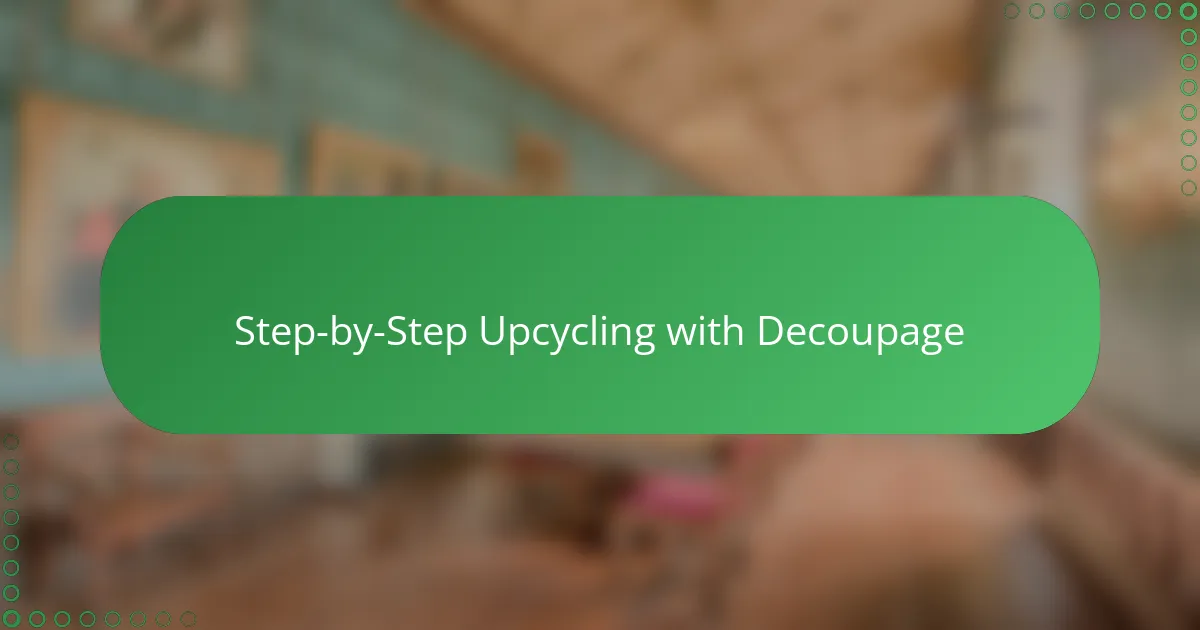
Step-by-Step Upcycling with Decoupage
When I first started upcycling with decoupage, I quickly realized that taking it step-by-step keeps the process enjoyable rather than overwhelming. I begin by thoroughly cleaning and prepping the item—whether it’s a wooden box or a glass jar—because a smooth surface makes all the difference in adhesion and final appearance. Have you noticed how skipping this step can lead to bubbling or peeling later?
Next, I carefully select my paper pieces, often cutting shapes or images that resonate with the style I want to create. Applying a thin, even layer of decoupage glue before placing the paper helps it settle smoothly without wrinkles, and I find that gently pressing with my fingers or a soft brush brings each piece closer to the surface. This part feels almost like storytelling, where each layer adds a bit more character and life.
Finishing is just as important as the layering—once everything is in place and dry, I seal the entire piece with additional coats of varnish or glue to protect my design and give it a lovely sheen. I’ve learned that patience during drying times prevents smudges and keeps the paper crisp, which always makes me proud when I hold the completed work. Don’t you love that moment when something old and overlooked transforms into a personalized treasure?
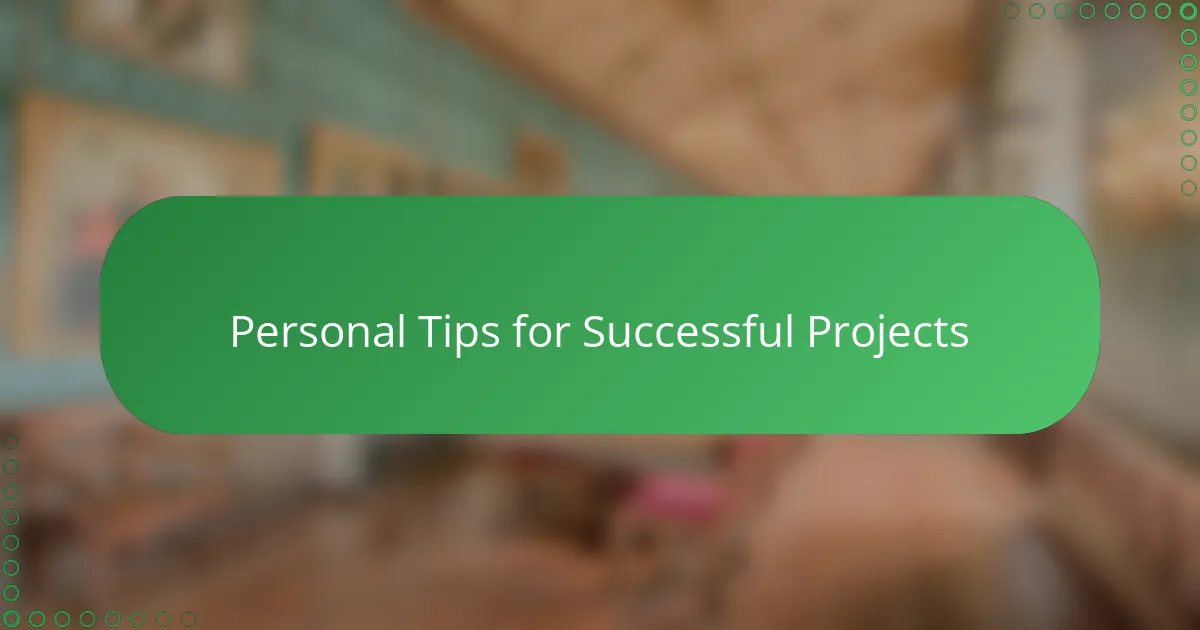
Personal Tips for Successful Projects
One tip I always keep in mind is to embrace patience, especially during drying times. Rushing to touch or add layers before the glue sets has caused me more than one smudge or wrinkle, turning a promising project into a frustrating lesson. Have you ever felt that mix of excitement and impatience? Waiting may feel slow, but it truly rewards your effort with a smooth, lasting finish.
Choosing the right papers is another game changer. I tend to pick handmade papers that complement each other in texture and color, which makes the layering feel more intentional and balanced. Whenever I mix too many patterns without a plan, the result can look chaotic rather than charming. Do you find yourself juggling paper choices? Setting a clear vision beforehand helps me avoid that creative overwhelm.
Lastly, I’ve learned to trust my mistakes as part of the process. Not every cut is perfect, and sometimes glue marks sneak in despite precautions. Instead of getting discouraged, I treat these moments as opportunities to experiment or start fresh with a new idea. Isn’t that freedom what makes upcycling so rewarding? Knowing you can reinvent both the materials and your approach keeps the craft endlessly inspiring.
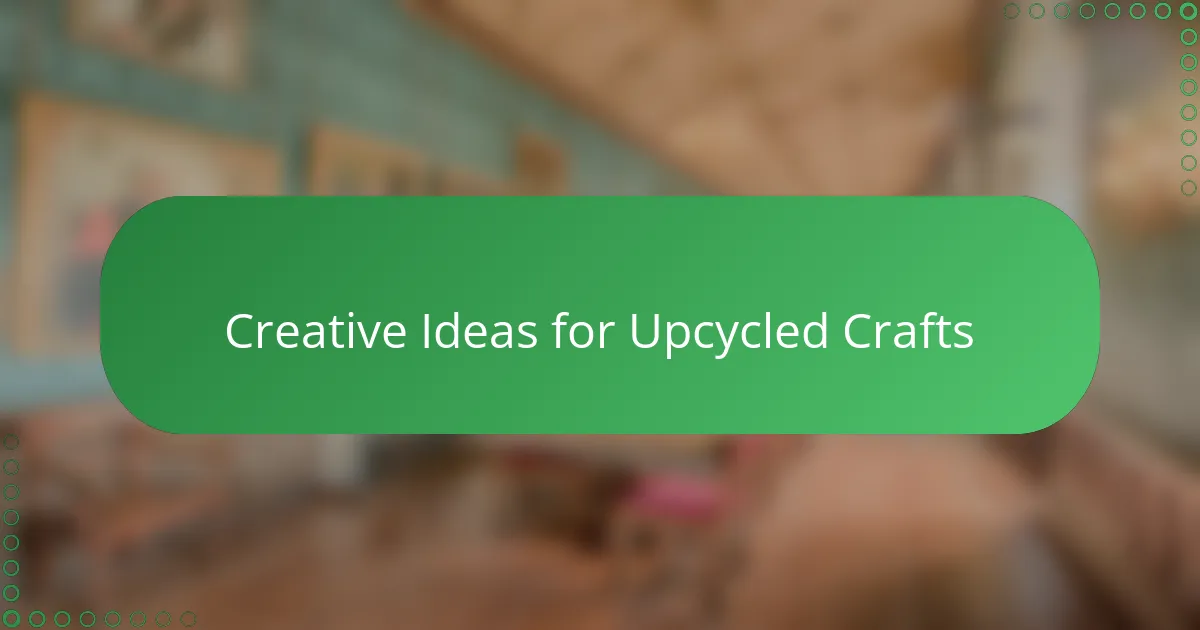
Creative Ideas for Upcycled Crafts
I love finding new ways to breathe life into old items, and upcycled crafts with decoupage offer endless possibilities. One time, I transformed a tired wooden tray by layering vintage handmade paper and floral cutouts—suddenly, it felt like a completely new piece with a story to tell. Have you ever noticed how a little creativity can make something ordinary feel truly special?
Sometimes, I experiment by combining textured handmade papers with unexpected materials like fabric scraps or old book pages. The contrast adds depth and surprise, making each craft project a joyful puzzle. Isn’t it exciting when materials you thought didn’t belong together come alive in a fresh, artistic way?
Another idea I cherish is turning simple glass jars or tin cans into charming storage by decoupaging favorite images or patterns. Not only does this reduce waste, but it also adds personality to everyday objects around the house. What could be better than functional décor that you made yourself and that carries memories embedded in the paper layers?
